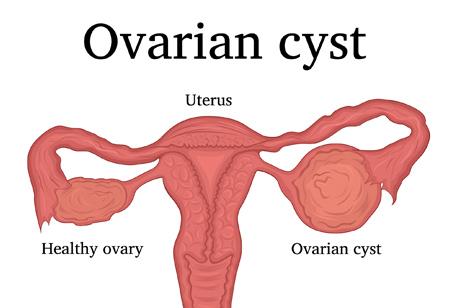Ovarian cysts can affect females of all ages, says Tiffany Stadnick, MD, an independent member of the HonorHealth Medical Staff. But the most common age range to be diagnosed is between 15 and 40 “because many benign masses are associated with reproductive functions,” she notes.
A common medical condition, ovarian cysts sometimes cause pain but typically are not cancerous or pre-cancerous. A cyst of this type is a growth — a sac or pouch — filled with fluid or tissue that develops in or on an ovary.
Types of ovarian cysts
There are three different types of ovarian cysts:
- Follicle cyst: Occurs if the sac (follicle) where an egg grows during your menstrual cycle, but does not break open to release the egg as it should. When this happens, the fluid inside the follicle can form a cyst.
- Corpus luteum cyst: The follicle usually dissolves after releasing an egg, but if it doesn’t, and the opening of the follicle seals up, extra fluid can develop inside the sac. This fluid build-up causes a corpus luteum cyst.
- Dermoid cyst: This pouch-like growth on the ovary can contain tissue other than fluid.
Symptoms of an ovarian cyst
In most cases, cysts do not cause symptoms. Many are found during a routine pelvic exam or during a medical imaging test done for another reason.
Some cysts may cause:
- A dull or sharp ache in the abdomen
- Pain during certain activities
- Pain on one side that comes and goes, or starts suddenly, usually from a larger cyst that may cause the ovary to twist
- Sudden, severe pain from a cyst that bleeds or bursts
Treatment of ovarian cysts
Choosing a treatment option depends on the type of cyst you have. If a cyst is not causing pain, “watchful waiting can be considered with your OB/Gyn, depending on the size of the ovarian cyst and your age at presentation,” Dr. Stadnick says. “Generally, there are certain size criteria that warrant closer observation. Many ovarian cysts will resolve on their own after one or two menstrual cycles.”
But if the cyst is large or causing symptoms, then surgery is recommended. Surgery includes a cystectom — removing the cyst to preserve the ovary.
Seeking medical attention
Women should be aware not only of symptoms of an ovarian cyst, but also that twisting of the ovary can occur.
If you have a known cyst and experience severe pelvic pain, seek immediate medical attention from an OB/Gyn.
Keep in mind that “ovarian cysts are generally benign and resolve with time,” Dr. Stadnick says. “The management of an ovarian cyst is a shared decision-making process that involves two experts coming to the table — you and your doctor — to create a treatment plan that is specifically made for you.”
